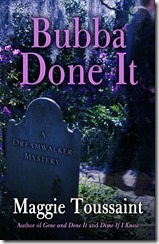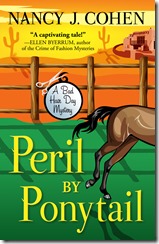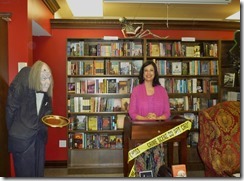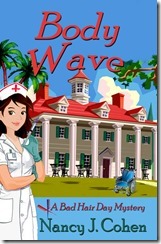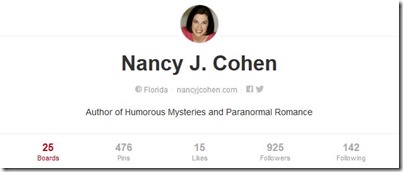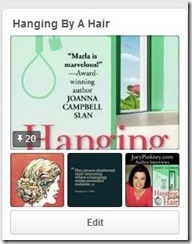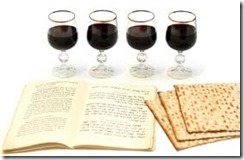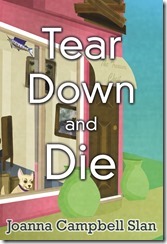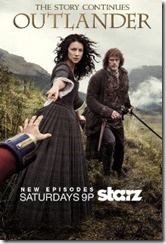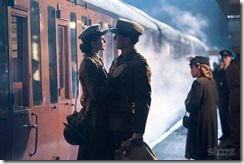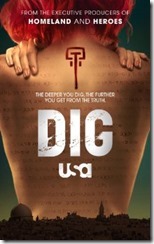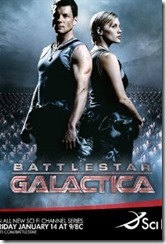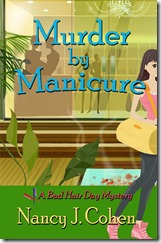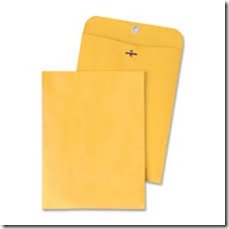When I began plotting my second paranormal mystery, Bubba Done It, I knew one thing for sure. All the suspects had the nickname of Bubba. Other than that, I didn’t have a clue.
Before I could cast men in the suspect roles, I considered my setting and the types of characters I needed. I’m familiar with the setting as I use a fictional locale that’s similar to where I live in coastal Georgia. We have townies and imports. We have people with plenty and people with nothing. We have blacks, whites, Hispanics, Asians, even Native Americans. We have a stalled economy and our share of foreclosures.
All of the top suspects needed a motive to kill the banker. Some motives I considered were previous criminal record, financial trouble, and love.
The sheriff immediately adds four Bubbas to his suspect list. Since seafood is the main industry around here, it would be good to have a fisherman Bubba. I also wanted someone who’d moved to the county as a retiree, someone who didn’t quite get locals or their customs. That worked. Two Bubbas down, two to go.
Drugs are a universal problem in today’s world. I decided upon a Bubba with a bad track record as a crackhead, but who had allegedly reformed into an evangelist.
Lastly, I wanted to ensure my sleuth Baxley Powell had a definite call to action. She’d taken the heat in Book 1 as the top suspect, so for Book 2, I found a patsy in her brother-in-law. Why would he want to kill the banker? Baxley knew her Bubba was a dreamer who often needed money for get-rich-quick ventures. Baxley and her husband had bailed Bubba Powell out of financial scrapes for years.
With her husband dead, the task of saving Bubba fell to Baxley. She’s certain he couldn’t have done it.
Or at least she feels that way at first. With each layer of story revealed, she discovers more reasons for the Bubbas to have killed the banker. Her challenge is to sort through the evidence, in this world and the next, to finger the killer.
To summarize:
Populate your suspect list with characters fitting to your setting and situation.
Give the suspects motives to kill your victim.
Layer the suspects’ relationship with the victim to create complex characters.
Make sure the sleuth has a clear call to action.
Buy links for Bubba Done It:
Kindle
Amazon hardcover
B&N hardcover
Connect with Maggie on the web:
Website | Facebook | Twitter | Blog | Goodreads | LinkedIn | Pinterest | Booklover’s Bench |
Amazon Author Central
 Southern author Maggie Toussaint is published in mystery, romantic suspense, and science fiction (writing as Rigel Carson). The third book in her Cleopatra Jones mystery series recently won the Silver Falchion Award, while her romances have won the National Readers’ Choice Award and the EPIC eBook Award for Romantic Suspense. Her latest mystery is a book two of her paranormal cozy series about a psychic sleuth, Bubba Done It.
Southern author Maggie Toussaint is published in mystery, romantic suspense, and science fiction (writing as Rigel Carson). The third book in her Cleopatra Jones mystery series recently won the Silver Falchion Award, while her romances have won the National Readers’ Choice Award and the EPIC eBook Award for Romantic Suspense. Her latest mystery is a book two of her paranormal cozy series about a psychic sleuth, Bubba Done It.

